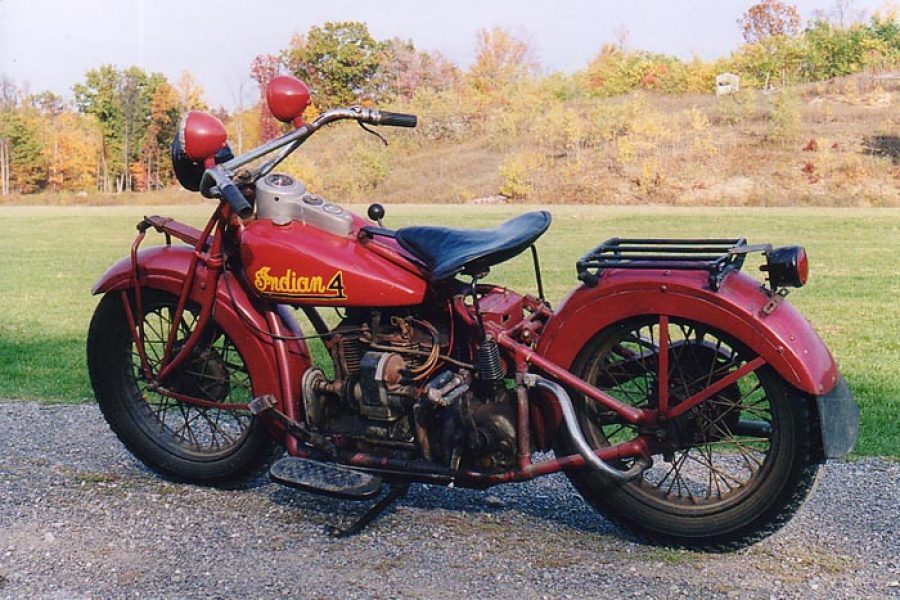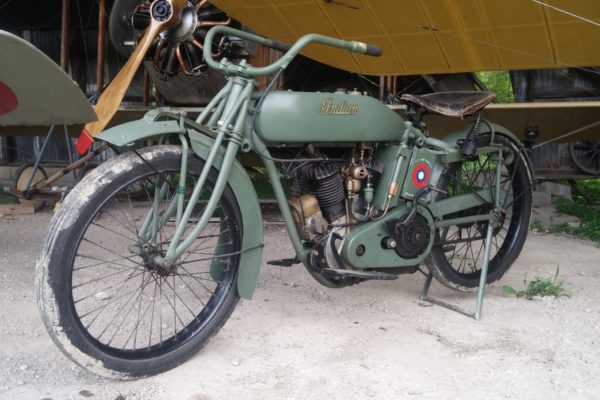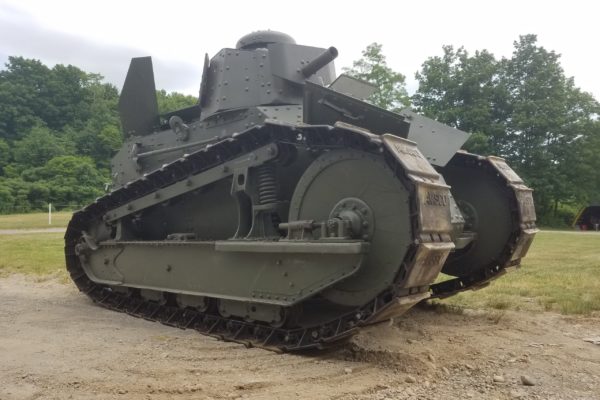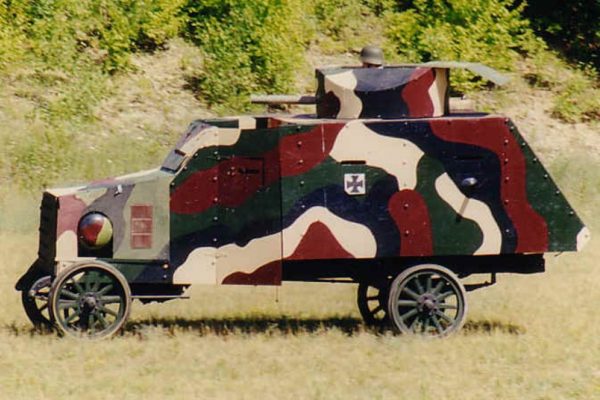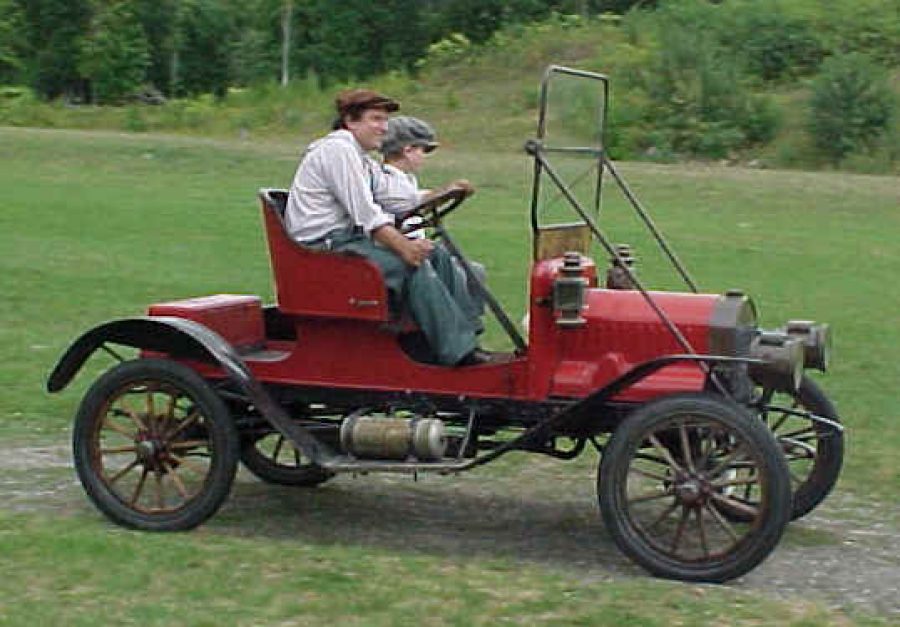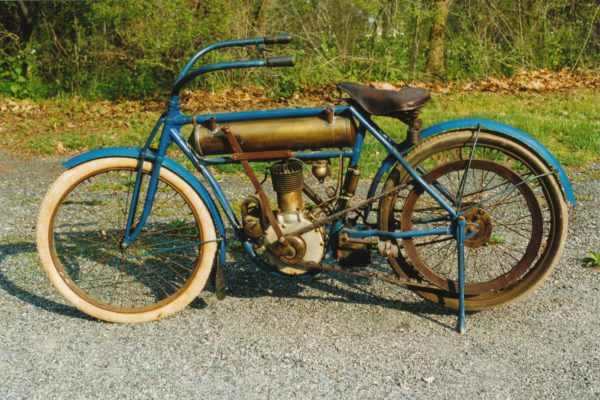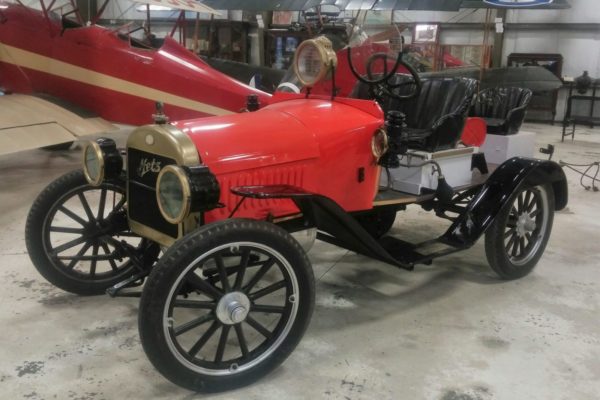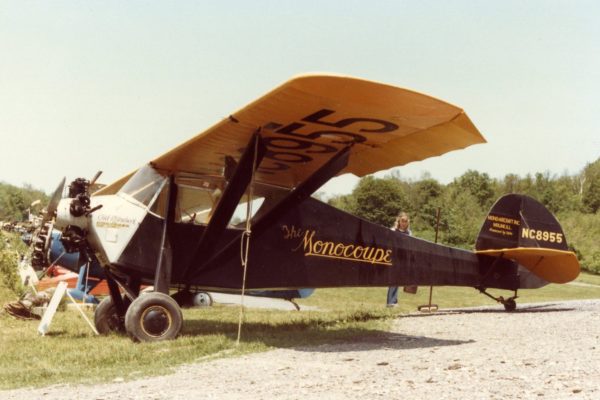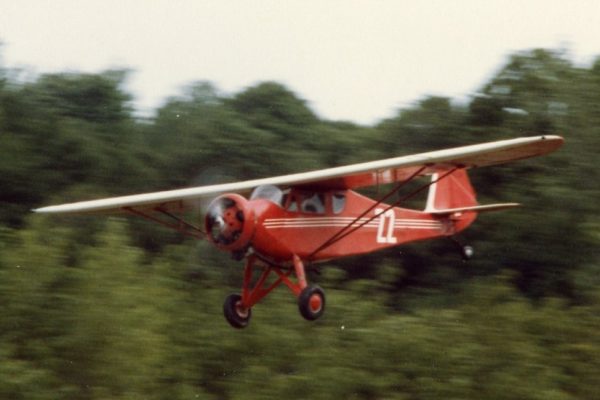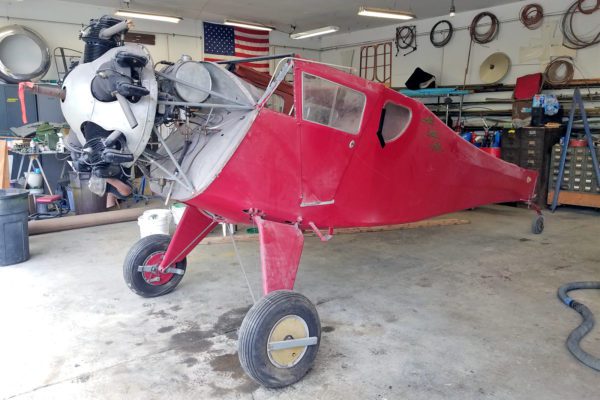The Indian Four design was developed and produced through the Great Depression until it was discontinued in 1942. The 1936-37 models saw a cylinder head modification that was expected to improve fuel vaporization and produce more power, however, it also produced a great deal of heat. This, along with a valvetrain that required regular adjustment, […]
Indian Motorcycle
Indian had at one time the largest motorcycle factory in the world. Starting in 1901 the Indian Company achieved fame prior to the First World War due to their great success at racing circuits around the globe. Advanced and sturdy designs insured their success for many years but changes on their board of directors led […]
M1917 Light Tank
The M1917 Light Tank was an American copy of the French Renault FT which was manufactured by three American companies during and after World War I, including Van Dorn Iron Works, Maxwell Motor Company and C. L. Best Company. The American M1917 tanks were made under a special license agreement with the Renault company of […]
Maxwell Armored Car
The Aerodrome’s Armored Car started out its long life as an apple truck. All that remained of the vehicle by the 1960s was the chassis so it was modified to serve as an ambulance in our Sunday shows for many years. When we acquired our Columbia Ambulance the Maxwell was again modified, this time to […]
Maxwell Runabout
The Maxwell Runabout was introduced in 1908. It was recommended to “the doctor, lawyer, contractor, city and suburban salesman, builder, businessman; in fact to everyone whose needs not exceed economical, safe and speedy transportation for two.” The two-cylinder 14 HP model LD sold for $825. Later the Maxwell Company became part of the well-known Chrysler […]
Merkel Light Motorbike
From 1902 through 1922 Merkel enjoyed success with well-designed motorbikes and motorcycles using single cylinder and “V” twin engines up to 986 cc. Eventually Merkel was purchased by Indian and their doors were forever closed.
Metz
The Metz was advertised as the winner of the Glidden Tour. This tour was an eight-day competition of endurance over challenging terrain. The Metz was also known as the “Gearless Car” with “No clutch to slip – no gears to strip.” Under ordinary conditions a Metz driver could travel anywhere from 28 to 82 miles […]
Monocoupe 113
Year: 1929
Engine: Velie
Horsepower: 60
Wingspan: 32 '
Top Speed: 98 mph (157 km/hr)
Gr. Weight: 1350 lbs (612 kg)
Original/Reproduction: Original
The Model 113 Monocoupe was a major development as it is the first popular production aircraft fitted with a cabin and two seats. The design would continue to improve with higher horsepower, more reliable engines and greater pilot comfort. This example was restored and flown at the Aerodrome, put on static display, and is now undergoing another restoration.
Monocoupe 90
Year: 1931
Engine: Lambert
Horsepower: 90
Wingspan: 32 '
Top Speed: 120 mph (192 km/hr)
Gr. Weight: 1490 lbs (676 kg)
Original/Reproduction: Original
The Monocoupe 90 was a slightly larger and more powerful version of the popular, two place, high wing, cabin monoplane. It retained the signature, graceful double taper of the fuselage top and bottom. About 324 were built and the design continued to evolve with more horsepower and sophistication. Our example, formerly raced by Phoebe Omlie, joined the collection in the mid-70s and flew for several years before being put on static display.
Monocoupe 90-J
Year: 1931
Engine: Warner Scarab Jr.
Horsepower: 90
Wingspan: 32 '
Top Speed: 120 mph (192 km/hr)
Gr. Weight: 1511 lbs (685 kg)
Original/Reproduction: Original
The Monocoupe 90 was a slightly larger and more powerful version of the popular, two place, high wing, cabin monoplane. It retained the signature, graceful double taper of the fuselage top and bottom. About 324 were built and the design continued to evolve with more horsepower and sophistication.

